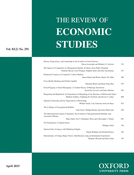-
Views
-
Cite
Cite
David De La Croix, Fabio Mariani, From Polygyny to Serial Monogamy: A Unified Theory of Marriage Institutions, The Review of Economic Studies, Volume 82, Issue 2, April 2015, Pages 565–607, https://doi.org/10.1093/restud/rdv001
Close - Share Icon Share
Abstract
Marriage institutions have changed over time, evolving from polygyny to monogamy, and then to serial monogamy (as defined by divorce and remarriage). We propose a unified theory of such institutional changes, where the dynamics of income distribution are the driving force. We characterize the marriage-market equilibrium in each of the three alternative regimes, and determine which one emerges as a political equilibrium, depending on the state of the economy. In a two-class society, a rise in the share of rich males drives the change from polygyny to monogamy. The introduction of serial monogamy follows from a further rise in the proportion of either rich females or rich males. Monogamy eases the transition to serial monogamy, since it promotes social mobility.



